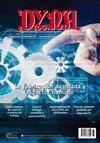用白云石和橄榄石在流化床中催化气化固体橘子废料。与非催化气化的比较
IF 0.7
4区 工程技术
Q3 ENGINEERING, MULTIDISCIPLINARY
引用次数: 0
摘要
摘要:柑橘的工业加工产生了大量的固体废物。这些废物已被用来补充动物饲养和生化过程,但气化过程没有重视其能源利用。在催化流化床(以白云石和橄榄石为催化剂,改变二次反应器温度和催化剂质量)中对柑桔固体废弃物进行了气化研究,并与非催化空气气化的结果进行了比较。在此过程中,我们使用了2k的全因子实验设计,使用design - expert®软件评估自变量及其相互作用在答案中的影响,显著性等级为95%。结果表明,通过对这些残渣进行气化处理,获得了低热值的气体,在能源利用中具有良好的质量。催化剂的使用也减少了在气化过程中获得的焦油的产量,使白云石比橄榄石更活跃。当二次反应器工作温度为800℃,使用60 g白云石作为催化剂时,rsn流化床催化气化在燃气热值、产气量和低焦油产率方面取得了较好的效果。关键词:废橙,催化气化,流化床,白云石,橄榄石本文章由计算机程序翻译,如有差异,请以英文原文为准。
CATALYTIC GASIFICATION WITH DOLOMITE AND OLIVINE IN FLUIDIZED BED, OF SOLID ORANGE WASTE. COMPARISON WITH NON-CATALYTIC GASIFICATION
ABSTRACT: The industry processing of the orange generates high volumes of solid waste. This waste has been used to complement animal feeding and biochemical processes, but the gasification process has not valued its energy use. Gasification studies were carried out with air in a catalytic fluidized bed (using dolomite and olivine as catalysts in a secondary reactor, also varying the temperature of the secondary reactor and the catalyst mass) of the solid waste of orange, and the results are compared with those obtained in the gasification with non-catalytic air. In the processes, we use a design of a complete factorial experiment of 2k, valuing the influence of the independent variables and their interactions in the answers, using the software Design-Expert® and a grade of the significance of 95 %. The results demonstrate the qualities of the solid waste of orange in the energy use through the gasification process for the treatment of these residuals, obtaining a gas of low heating value. The use of catalysts also diminishes the yield of tars obtained in the gasification process, making dolomite more active than olivine. The better results of fluidized bed catalytic gasification of RSNs, in terms of gas heating value, gas yield, and low tar yield, are obtained when the secondary reactor operates at a temperature of 800 ºC and using 60 g of dolomite as a catalyst. Keywords: Orange waste, catalytic gasification, fluidized bed, dolomite, olivine
求助全文
通过发布文献求助,成功后即可免费获取论文全文。
去求助
来源期刊

Dyna
工程技术-工程:综合
CiteScore
1.00
自引率
10.00%
发文量
131
审稿时长
6-12 weeks
期刊介绍:
Founded in 1926, DYNA is one of the journal of general engineering most influential and prestigious in the world, as it recognizes Clarivate Analytics.
Included in Science Citation Index Expanded, its impact factor is published every year in Journal Citations Reports (JCR).
It is the Official Body for Science and Technology of the Spanish Federation of Regional Associations of Engineers (FAIIE).
Scientific journal agreed with AEIM (Spanish Association of Mechanical Engineering)
In character Scientific-technical, it is the most appropriate way for communication between Multidisciplinary Engineers and for expressing their ideas and experience.
DYNA publishes 6 issues per year: January, March, May, July, September and November.
 求助内容:
求助内容: 应助结果提醒方式:
应助结果提醒方式:


